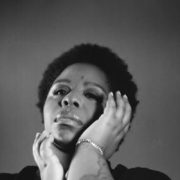The founder of BLM discusses the need for momentum in the fight for justice.
— Amira Rasool, i-D:Vice
Every major opposition movement has its flaws. In the mid-20th century during America’s classic civil rights movement, the National Association for the Advancement of Colored People (NAACP) and Martin Luther King’s Southern Christian Leadership Conference (SCLC) arose as the dominant organisations in the Black freedom struggle. The leading figures of these movements were almost exclusively highly educated Black men who, unconsciously or not, prioritised fighting for legislation and social reform that primarily served the interest of Black men.
During this revered period in civil rights history, there was no room for a Black woman like Patrisse Cullors-Brignac, one of the three co-founders of the Black Lives Matter organisation, to assume any real leadership role, and even less room for her to advocate within these male-dominated spaces for solutions to problems that were unique to Black women. Now, almost 70 years later, there has been a major shift in what it looks like to be a Black civil rights leader. The proof lies with Patrisse, who along with her two Black female co-founders, have led the world to chant and protect the most basic truth: Black Lives Matter.
— Credits & Context
Featured Image, Kirstin Powell
Full article @ i-D:Vice
Black Lives Matter
Black Lives Matter (BLM) is a decentralized political and social movement advocating for non-violent civil disobedience in protest against incidents of police brutality and all racially motivated violence against black people. The broader movement and its related organizations typically advocate against police violence towards black people, as well as for various other policy changes considered to be related to black liberation.
In July 2013, the movement began with the use of the hashtag #BlackLivesMatter on social media after the acquittal of George Zimmerman in the shooting death of African-American teen Trayvon Martin 17 months earlier, in February 2012. The movement became nationally recognized for street demonstrations following the 2014 deaths of two African Americans: Michael Brown—resulting in protests and unrest in Ferguson, Missouri, a city near St. Louis—and Eric Garner in New York City. Since the Ferguson protests, participants in the movement have demonstrated against the deaths of numerous other African Americans by police actions or while in police custody. In the summer of 2015, Black Lives Matter activists became involved in the 2016 United States presidential election. The originators of the hashtag and call to action, Alicia Garza, Patrisse Cullors, and Opal Tometi, expanded their project into a national network of over 30 local chapters between 2014 and 2016. The overall Black Lives Matter movement is a decentralized network of activists with no formal hierarchy.
Source – Black Lives Matter (Updated: 24 September 2020) Wikipedia. Available at https://en.wikipedia.org/wiki/Black_Lives_Matter: (Accessed: 24 September 2020)

